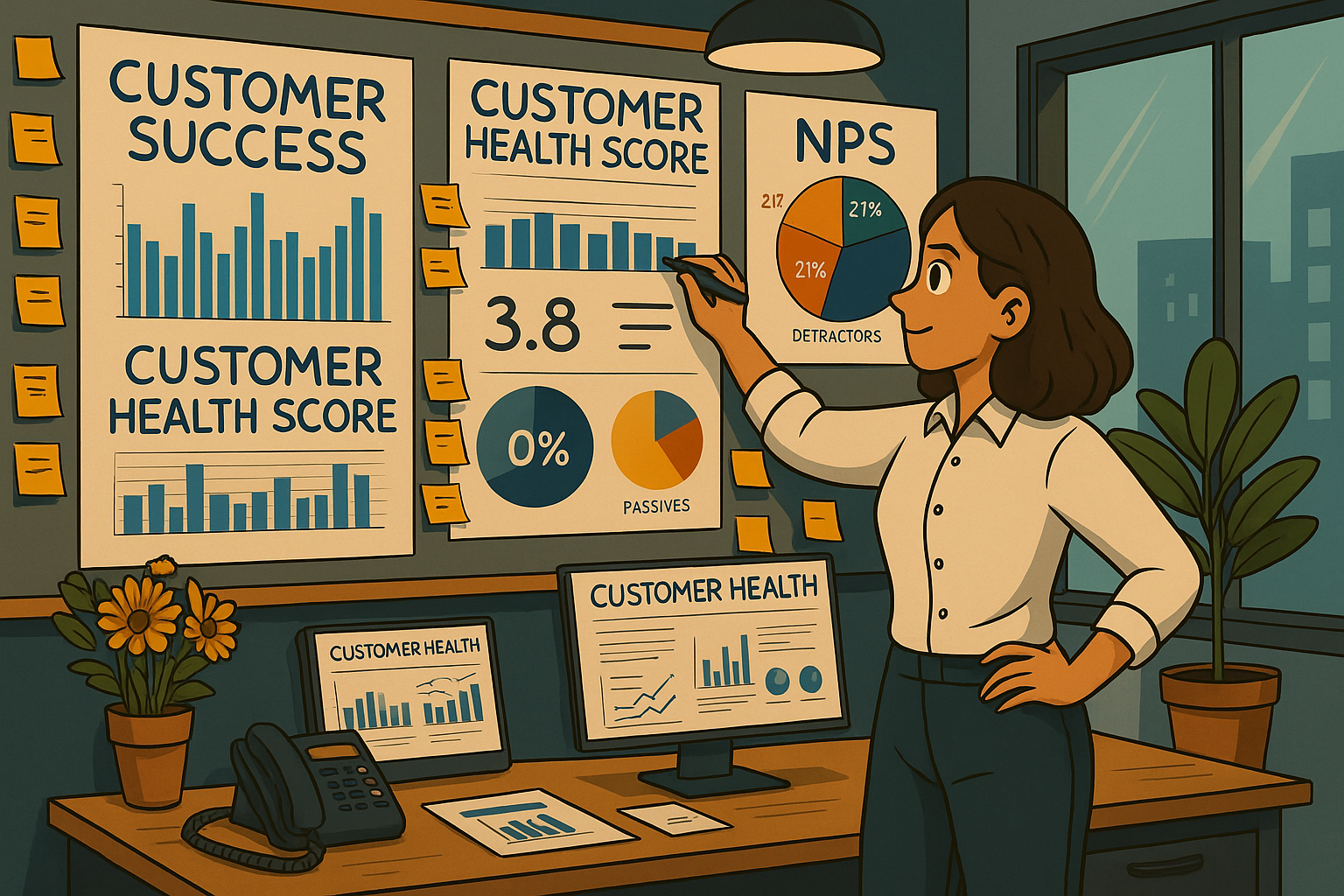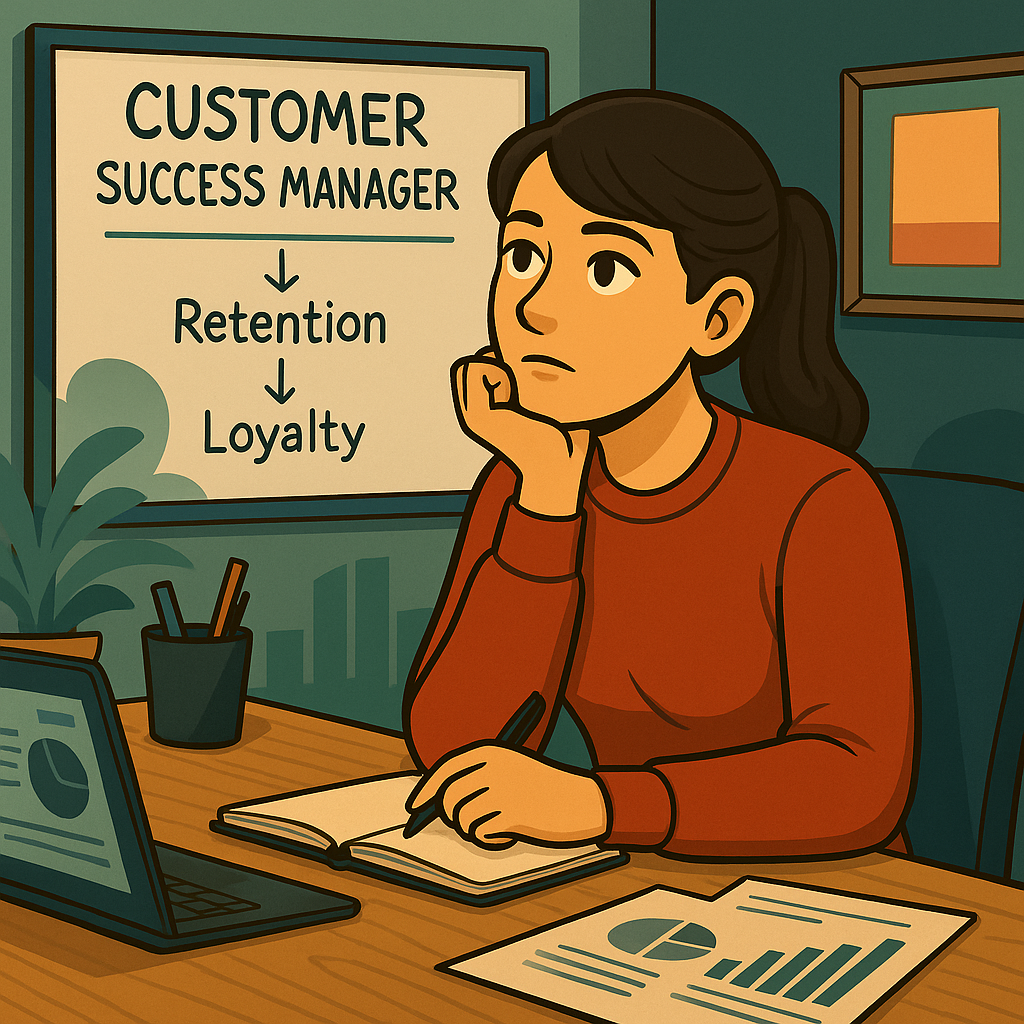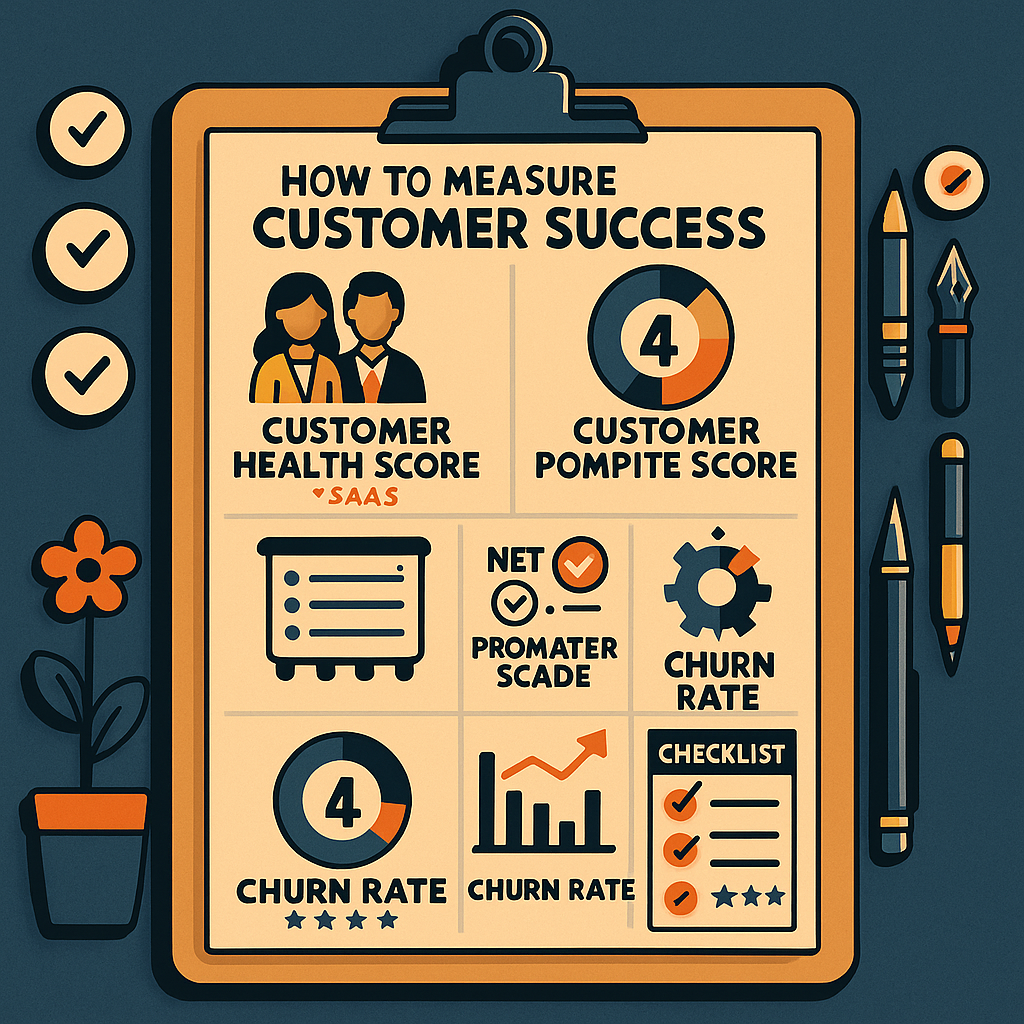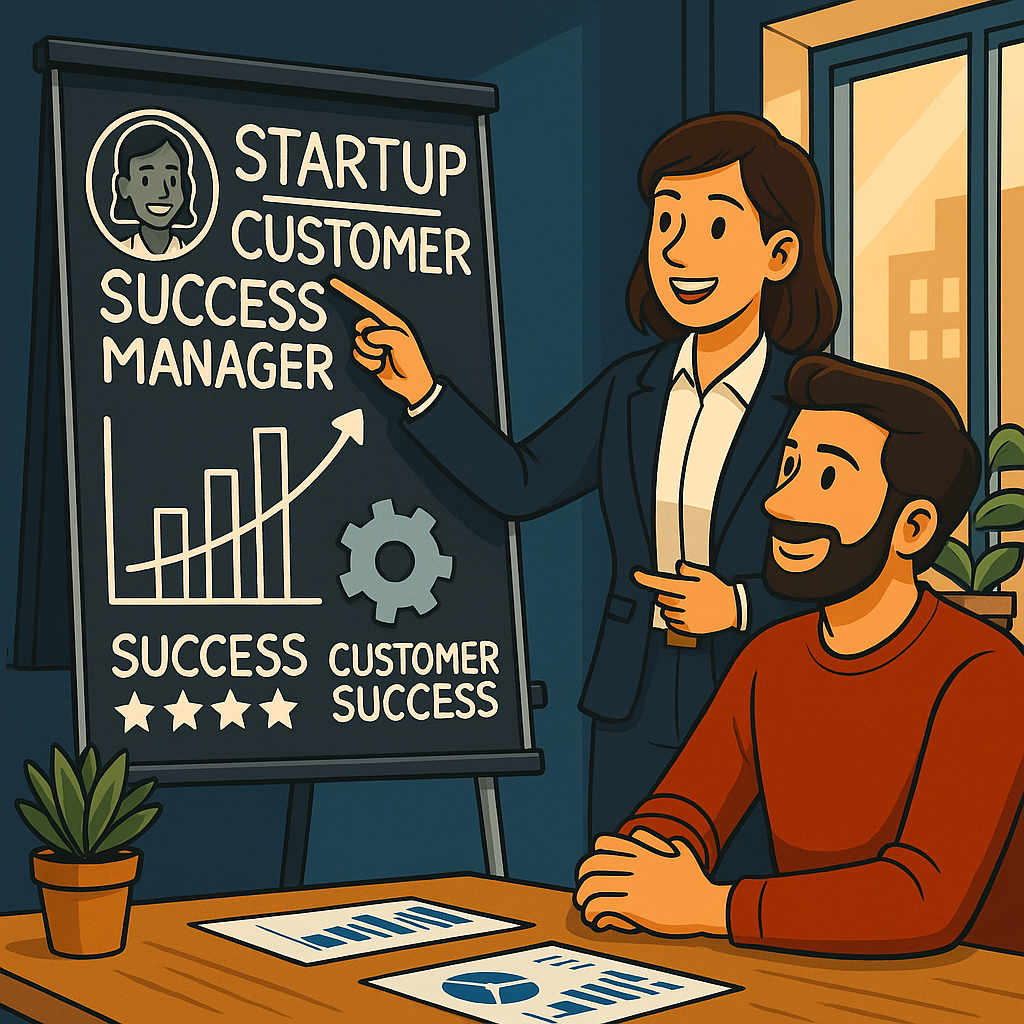
What if Customer Success isn’t what you thought? How to measure it from scratch
When Customer Success begins with uncertainty
When I started working in Customer Success at a startup, I faced a fascinating challenge: How do you measure customer success when you don’t have enough data or structure yet?
In my first year, we only had two clients, both with a close personal relationship to the company. I kept asking myself:
Is this success real, or is it just loyalty based on personal ties?
While we absolutely had to thank them for their engagement and honest feedback, over time we developed a Health Score metric based on their behavior — and that of early adopters joining the company.
But when renewal time arrived, we discovered that although everyone said our product was valuable, the hidden truth was:
They couldn’t extract useful insights or apply them to their day-to-day operations.
🎯 That’s when I realized customer success goes far beyond retention or platform usage: It’s about making real impact in their business.
👉🏽 In this article, I’ll show you how you can measure customer success in your company — whether you’re a startup or a growing organization — and the strategies that can help your CS team level up.
👉🏽 Also, check out this article on Customer Retention: The Real CSM Battlefield to plan your own success strategy.
🤺 Why measuring Customer Success is critical?

Measuring customer success is not just about KPIs and dashboards. It’s a core strategy for long-term sustainability and growth. When you really understand what success means for your clients, you can:
- Reduce churn rates: Identify early signs of dissatisfaction to avoid losing clients at the first opportunity.
- Increase expansion and upselling: Successful customers are more open to new opportunities — amplify their stories and give them a voice.
- Optimize customer experience: Based on data, not assumptions.
I’ve learned assumptions can be dangerous. Direct feedback is useful but not always shared — either intentionally or due to lack of awareness. That’s why we need to back it up with data. - Demonstrate tangible value: This is key to justifying investments in CS and tech. Always ask: What real changes has our customer achieved, and what value did they gain? Is it enough? How can we keep helping them? Once early wins are achieved, what’s the next challenge we help them solve?
💡 Companies that master the art of measuring customer success gain a competitive edge in loyalty and sustainable growth.
📊 Key indicators for measuring Customer Success
Not all metrics are relevant for all companies. As mentioned earlier, you need to consider your business stage and choose the KPIs that align with your model and your clients’ expectations.
🕵🏽♀️ You’ll find the full list of essential metrics, how to extract them and how to use them in your daily operations in these articles:
👉🏽 Still, here are some additional metrics that can be helpful:
- Customer Effort Score (CES): How easy is it for your customer to interact with your company?
- CSM Engagement: How many customers are having meaningful interactions with their CSM?
- Customer Goal Achievement: Are they reaching their goals with your product or service?
📉 Leading CX and CS companies show that combining these KPIs with predictive analytics significantly improves retention.
🚀 Measuring success in Startups and new products

Measuring customer success without historical data, as in a startup, is especially challenging — you don’t have enough volume to recognize patterns.
Here are some real strategies that helped us define success and achieve it early on:
1. Define “Success” from Day One
One of the biggest mistakes is assuming that “product usage” equals “success.”
But each customer has a different definition. From onboarding, understand their goals and align your metrics accordingly. I can’t stress enough that this moment is crucial for building a solid foundation for the future.
💡 Real example:
At first, our metric was simply the number of logins per user.
Later, we realized what really mattered was whether they were turning insights into action in their daily workflows.
2. Create a Health Score with early signals
In startups, it’s hard to predict which customers will stay or leave until renewal time arrives. But obviously, you can’t spend a whole year investing resources only to crash in the end. However, if you’re paying attention, you can gather valuable insights during this period to refine your ideal target and move towards a clearer plan. Creating a Health Score with early warning signs helps you act before churn happens. Some of these signals include:
- Drop in product usage
- Decrease in contact with CSM
- Negative NPS or qualitative feedback
3. Use qualitative surveys and interviews
When quantitative data is limited, customer interviews can give you valuable insights to help refine your product. Key questions include:
- What key problem did our product solve?
- What adoption barriers did you face?
- What impact has it had on your day-to-day?
- What outcome would you like to achieve with the least effort possible?
Companies like HubSpot and Deel used this approach early on to shape their Customer Success strategy — and we did too, with great results.
💡 Real-world impact:
Combining these three strategies helped us not only retain clients but understand what they really wanted. This fed product development and helped us build something our customers now can’t live without.
📈 Taking Customer Success to the next level

If you already have a Customer Success team and have passed the initial product stage, you’re starting to understand what your customer really wants and your business is gaining traction. Here are strategies to optimize and boost your efforts:
🤖 Use AI for predictive insights
AI is no longer a “nice to have” — it’s a competitive advantage. When used correctly, it helps you analyze customer data and predict behaviors. Gartner reports that companies using advanced analytics in CX see a 20% higher retention rate.
Use it for predictive churn models, usage and adoption insights, sentiment analysis, and customer segmentation based on patterns like revenue, size, satisfaction, and expansion potential. Why limit yourself to just one variable? Why not leverage these tools to help your team focus on what truly matters?
🔄 Automate without losing the human touch
We’ve mentioned this repeatedly: automation is key today, serving as the lever to scale many departments, including Customer Success. The big challenge with automation and the reason many companies struggle to start is achieving efficiency without sacrificing closeness. Being precise, knowing which resources to use and where to automate is crucial.
Even so, I encourage you to try it. Zendesk’s CX Trends 2025 report indicates that companies adopting these tools are nearly 4 times faster than their competitors, allowing for more relevant interactions. How to automate? You can focus on:
- Intelligent chatbots with personalized tones to maintain human quality.
- Automated Customer Journey flows and real-time Health Score alerts. Beyond the popular onboarding, adoption, renewal, expansion, and product usage, key functionalities can be designed. For example, if a customer has used a feature for 14 days, an educational email and alert can trigger the CSM to follow up. Could this be a good moment for upselling? What are you waiting for?
- AI copilots for CSMs. Companies like Next or Siemens use AI copilots to provide representatives with real-time suggestions for resolving cases, drafting responses, or recommending relevant content. The goal isn’t to replace the CSM, but to enhance their customization, responsiveness, and equip them with ongoing support.
💡 Practical tip:
Automate repetitive tasks, but reserve critical interactions (like negative feedback or expansion conversations) for your human team. AI is your copilot, not the pilot.
🔎 Focus on customer expansion

While retention is essential, the true sustainable growth lies in expanding your current accounts. Companies that master this strategy generate more stable revenue, reduce dependency on new leads, and reinforce customer loyalty.
According to studies by Salesforce and HubSpot, up to 40% of revenue growth can come from existing customers when properly managing upsell, cross-sell, or strategic renewal plans. To achieve this, use account segmentation strategies based on growth potential, product adoption, or advanced feature usage. Additionally, consider playbooks or gamification to present upgrade proposals with similar use-cases and exclusive offers that facilitate these operations.
🫱🏻🫲🏾 Become a strategic advisor:
Customer Success teams should evolve from simple support roles to strategic partners. How?
- Providing relevant market insights to offer competitive and market intelligence to help customers position themselves.
- Helping integrate the product with other company systems and demonstrating the ROI of these integrations.
- Guiding customers through best practices and providing resources like case studies or tailored recommendations for their entire team, including leadership.
📍 Conclusion
🌟 Customer success measurement isn’t about numbers — it’s about real impact.
🏆 Whether you’re building from scratch or optimizing at scale, success comes from:
Relevant KPIs + Early Signals + Smart Tech = Real Growth.